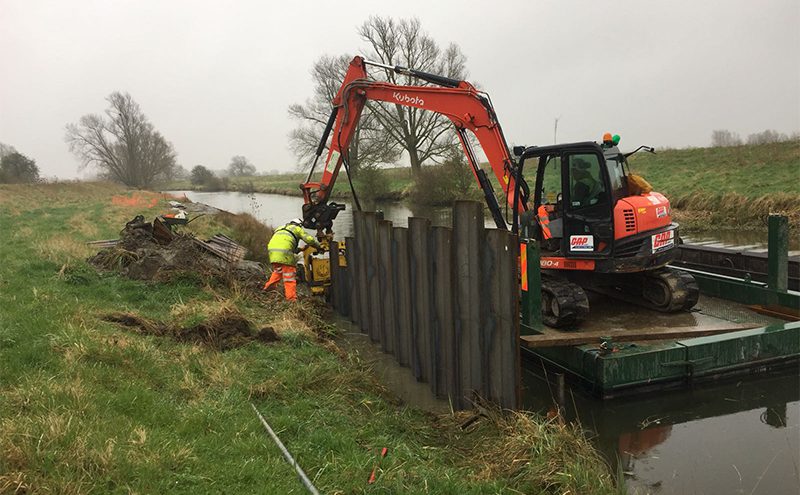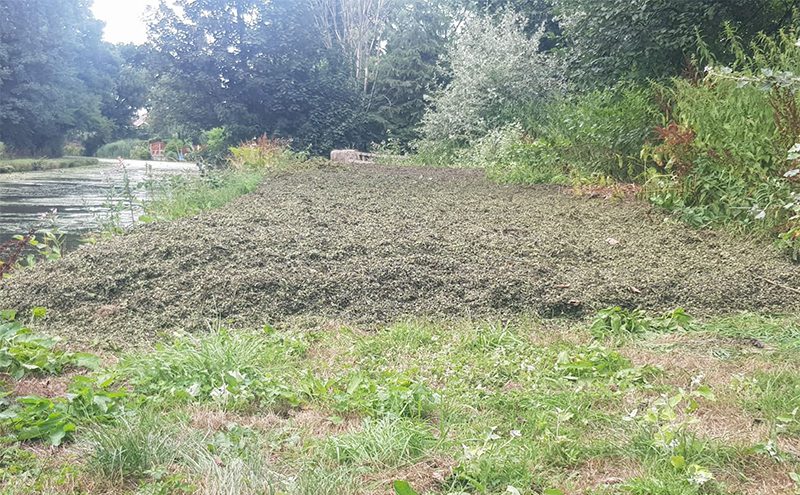Charlotte Lea, ecologist at The Rothen Group, a civil engineering and maintenance firm servicing UK waterways, explains the important reasons for managing excess reed growth.

Why is reed cutting important?
While there are many reasons for reed cutting, it is usually done to keep the water flowing and to stop the overgrown reeds from choking the body of water. Reed cutting has many benefits however, and minimises the damage overgrown weeds and vegetation can cause to the environment and surrounding habitat, as well as improve the appearance and overall safety of the waterways.
From an ecological perspective, reed cutting is crucial to maintaining a mosaic habitat of low and high vegetation, flowering plants and open water. For sites suffering from invasive species growth, such as floating pennywort, the process of reed cutting is even more essential as without proper maintenance invasive species can destroy native water plants, kill fish and block drainage systems.
How is the reed cutting process done?
The size and location of the site will determine the approach and reed cutting equipment used. At The Rothen Group, we have experience of removing reeds from small sites, such as entrances to dry docks and side ponds, as well as from larger expanses of canals or watercourses.
For larger sites, our specialist reed cutting boat removes reeds from the water with ease, while simultaneously removing vegetation from along the banks thanks to a flail head attachment on the side arm of the boat. The design of the flail head attachment allows for living creatures, such as invertebrates, to be released back into the water safely during the process.
For smaller bodies of choked water, The Rothen Group suggests using a digger with a long reach excavator arm in order to perform reed clearance from the bank side. This is a cost-effective option as there is no need to mobilise the boat. Once the job is complete, a healthy margin of vegetation is left around the border, and landowners are advised on how to best maintain the area.
For unstable banks or where the water levels are too low to float a boat, The Rothen Group uses an amphibious excavator to remove reeds. The excavator can be used in shallow water (around a metre deep), without sinking. A side pontoon can also be attached to allow the plant machinery to operate in deeper water if required.
The important thing to remember is that reed cutting maintenance can be completed at any time, but it is typically done during the warmer months when reeds usually grow more rapidly. Overgrown vegetation can quickly lead to choked water, so it is good practice to plan maintenance around the summer months and to monitor it.

Dealing with waste
Once removed, vegetation is either left along the banks to compost down or loaded onto hoppers and moved by pusher tugs to a discharge site. For very dense reed growth and strong river currents, boats with twin propulsion augers are used to transport the waste. All of The Rothen Group’s boats have biodegradable hydraulic oil, so that no oil can pollute the water. At the discharge site, the reeds are left to dry and then used as topsoil or compost.
In practice
The Rothen Group has recently used its marine ready excavator, placed on a pontoon, to clear vegetation growth safely before then installing over 500m of piling to stabilise the bank of the River Cam in Cambridgeshire.
Colin Wilkinson, Contract Manager at JN Bentley, who employed The Rothen Group for this job, commented: “Having worked on similar projects before, The Rothen Group demonstrated a high level of appreciation for and understanding of the risks involved, while confidently explaining how they would manage these. This comprehensive approach has paid of dividends, with a potentially tricky site being dealt with professionally and promptly throughout the programming and delivery. Expertise from the ecological arm of the business was also an added benefit due to the time sensitive nature of the works being completed and the location on a site of special scientific interest.”
Charlotte Lea, added: “Due to the rural setting there was no access for land-based plant or equipment, other than at the centrally located compound. This meant that all access for piling and vegetation clearance works had to be undertaken from waterborne plant. There were also strict time constraints that needed to be met for ecological and environmental reasons, due to parts of the project being within a site of special scientific interest. Despite all of this, we were able to complete the works in just four months.”






